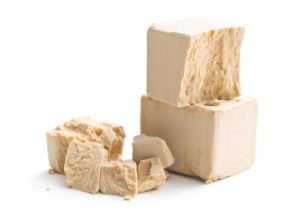
Table of Contents
Just Google the words dog nutrition tips, and you will be assaulted with a deluge of results.
There are literally thousands of so-called tips.
But which ones should you trust?
I've gone through a number of dog nutrition-related studies to gather a total of 13 evidence-based dog nutrition tips.
There is a lot more to properly feeding your dog than just buying a bag of commercial dog food that is labeled “healthy,” “holistic,” “wholesome,” or any other gimmicky term that may sound appealing at first glance.
Because of how loose the laws governing pet nutrition are, there are many loopholes when it comes to pet food labeling guidelines, and broad terms like healthy, premium, and holistic are just the tip of the iceberg.
If you are truly concerned about your dog's nutrition, you need to focus on more than just the information provided on the dog food label.
Other dog owners may give you dog nutrition tips about raw dog food or a homemade dog food diet, saying it's the only way to feed your pooch a 100% healthy meal.
Is this true, or just the opinion of that person based on a single experience and anecdotal evidence?
The only way to know for sure is to do your own research from trusted, scientifically-backed sources and talk with experts like your veterinarian or a canine nutritionist.
Some of these dog nutrition tips we're taking a look at below are backed by scientific research.
ALSO READ: 4 Dangerous Ingredients (According to Studies) Commonly Used in Dog Foods
13 Evidence-based Dog Nutrition Tips
1. Go Natural
It's no secret that the less processed any food is, the better it is for our or animals' health. So keep your dog's diet as natural as possible and include as many whole foods as you can.
An often-quoted study (Buff et al. 2014) found that the process used to create commercial pet food negatively impacts nutrient content, which brings about digestibility and safety issues for both dogs and cats.
Dogs did not evolve, eating commercially processed foods.
The majority of commercial dog foods differ greatly in nutritive characteristics from the traditional and natural diet of dogs.
This difference in dietary nutrient profile may pose physiological and metabolic challenges for canines, according to a recent Cambridge study (Bosch et al. 2015).
2. Homemade Dog Food Isn't Always Better
There is a growing idea that homemade dog food meals, or at least home-prepared foods, are always the best and safest route to take.
Here at Top Dog Tips, we've published a ton of homemade dog food recipes for pet owners to try.
But is it really the best way to go for your dog every single time? Not really.
While homemade dog food may be much better than a lot of low-quality commercial pet foods, it also has its disadvantages.
For example, studies have shown that home-prepped dog food meals are more expensive and more time-consuming for owners.
But to make matters worse, many homemade meals have a nutrient imbalance, according to several AVMA studies (Stockman et al. 2013).
“…seemingly benign substitutions such as swapping one meat for another can dramatically alter the nutrients and calories provided by the diet.”
Some believe that this is due to a lack of clear instructions in many dog food recipes. So not only do they cost more and are inconvenient, but there are also no guarantees that homemade meals give dogs exactly what they need. However, that's not to say you should avoid cooking for your dog.
Dr Cailin R Heinze of Tufts University has reviewed more scientific literature on this matter and explains in her article how homemade dog foods can be very healthy for your pet in specific cases and when prepared right.
If you don't mind spending a little extra time on making them, and possibly the added extra cost, including the essential dog supplements for homemade foods, then this can be one of the best ways to feed your pooch.
3. Take Dog's Age Into Account
All dogs are not made equal, which is one of the often-forgotten dog nutrition tips in itself.
Their individual differences must be taken into account when talking about nutrition.
Age is one of these factors.
There is one single perfect dog food brand that will fit all dogs and no single homemade dog food recipe that will definitely be adequate for every pet.
In her science-based article on feeding dogs based on their age, Dr Fiona Caldwell explains how many commercial brands and dog food recipes forget the importance of accounting for the dog's age. This can result in serious nutritional problems.
For example, studies show (Moyers, 2015) that older dogs not only have different nutritional needs but are also more prone to certain diseases and disorders than younger dogs, which means you need to feed them differently.
Degenerative joint, cardiac renal, and liver diseases, along with obesity, are more prevalent in mature dogs.
These health risks should be considered when coming up with the optimal meal plan.
RELATED: Top 10 Best Senior Dog Food Brands for Health and Longevity
4. Dogs May Need Probiotics Too
The importance and understanding of probiotics in humans have drastically increased within the last decade (Guarner et al. 1998; Kechagia et al. 2013).
The truth is that a healthy gut flora is also important for canines, and we've been seeing a lot more studies on this in dogs.
For example, in one study with dogs and cats (Grzeskowiak et al. 2015), a combination of specific probiotic strains has been shown to prevent allergic reactions and treat acute gastroenteritis as well as inflammatory bowel disease.
Maintaining the right amount of the correct gut bacteria is not only essential for the health and well-being of canines but can also help in the treatment and prevention of allergies and certain diseases.
The right source of probiotics must also be considered. For example, one study (Weese et al. 2003) has demonstrated how probiotics included in commercial pet foods simply do not reach the required amount to have any effect on pets, and separate probiotic supplements for dogs may be a better choice, although quality control still remains a problem in this area as well (Weese, et al. 2002).
5. Dog's Kidney Care
 As our dogs continue to age, it is only natural that certain bodily functions and processes deteriorate. The body and its organs experience the wear and tear that comes with years of existence. Health problems like arthritis, liver disease, and kidney failure are some of the most common pet owners of senior dogs will have to deal with.
As our dogs continue to age, it is only natural that certain bodily functions and processes deteriorate. The body and its organs experience the wear and tear that comes with years of existence. Health problems like arthritis, liver disease, and kidney failure are some of the most common pet owners of senior dogs will have to deal with.
This is life, but it doesn’t mean that we can’t do something to ease the pains and rigors of aging in dogs.
One of the best dog nutrition tips we can take is to keep our dog's kidney function in mind when choosing dog food.
It has been shown (Hall et al. 2015) that feeding canines renal protective foods in conjunction with functional food bioactives can turn back the clock in age-related renal function decline.
Feed your senior dog energy-dense foods that contain fish oil, lipoic acid, fruits, veggies, and high-quality protein sources to help keep his kidneys healthy and functioning.
Further research demonstrated how adding an additional serving of certain supplements like omega-3s from fish oil for dogs can also improve your senior dog's kidney health and even fight renal disease in dogs (Brown et al. 1998; Brown et al. 2000).
6. Mind the Fat
Fat is commonly addressed in most dog nutrition tips out there. Due to their reputation as carnivores, there is a great emphasis on protein intake when it comes to canines.
However, an equal amount of importance should be placed on how much fat they consume.
Don’t get it wrong – the consumption of fats and healthy cholesterol is vital to the health of dogs.
But when creating a meal plan to manage your dogs’ weight and health, it is best to look at the amount of fat you are giving them.
The key here is healthy balance because dietary fat is essential for dogs, but too much of it is detrimental.
Evidently, much of the commercial food available in the marketplace is fat-laden and counterproductive in maintaining balanced nutrition, according to studies (Farcas et al. 2015).
7. Treat Dogs Like Humans
If you want to extend the lifespan of “man’s best friend,” treat him like an aging person.
Maintaining a dietary and physical activity regimen like that of an aging human has shown great benefit when applied to dogs (Butterwick, 2015).
Overfeeding in particular leads to shorter lifespan in dogs, studies show.
Promoting healthy eating and mobility is a no-brainer when it comes to an aging human populace. Dogs are no different. Their lifespan will be significantly increased due to these interventions.
More research has also shown how accurately assessing your dog's weight and subsequently adjusting his diet can actually add years to a dog's life.
When it comes to older dogs, a greater degree of emphasis must be placed on providing them with key macronutrients.
Protein content, phosphorus, and sodium intakes should be monitored closely, as nutrient absorption for a mature canine is much different than that of a juvenile (Larsen et al. 2014).
Greater attention should be placed on athletic or working geriatric canines, and this is one of the most important dog nutrition tips to keep in mind.
Feeding athletic dogs is very different from your average pet.
Due to the amount of energy they exert, it is imperative that these working dogs receive specific nutrition, certain foods, and supplements, such as an addition of dietary long-chain omega-3 fatty acids (Wakshlag et al. 2014).
Fats give these canines the energy they need and help maintain joint health.
8. Know the Value of Taurine
Mostly known for its presence in energy drinks, taurine is usually overlooked when it comes to dog nutrition tips and feeding our pets.
Taurine is an essential amino acid, and dogs who suffer a deficiency in it can develop enlarged hearts (dilated cardiomyopathy), according to research (Gray et al. 2015).
In a 2003 AVMA study, they found that certain breeds, such as Newfoundlands and American Cocker Spaniels, are especially susceptible to taurine deficiency (Backus et al. 2003).
As such, these dogs should be monitored closely to avoid health complications, and their diets need to be adjusted with a certain amount of focus on taurine.
9. Don’t Judge Food Based Solely On Your Dogs’ Reaction
 Simply because your dog gobbles up every single morsel of food in his bowl doesn’t mean that he just consumed a healthy and well-balanced meal. There are many dog foods for picky eaters that are more likely to be enjoyed by canines, but not all of them are the best for your specific dog.
Simply because your dog gobbles up every single morsel of food in his bowl doesn’t mean that he just consumed a healthy and well-balanced meal. There are many dog foods for picky eaters that are more likely to be enjoyed by canines, but not all of them are the best for your specific dog.
Moreover, some specific ingredients are downright harmful yet tasty to your Fido. Take full-fat rice bran (FFRB), for example.
Dogs will gladly eat dog food that is composed of up to 40% FFRB; however, when eaten in excess, FFRB can lead to vomiting and diarrhea in dogs, according to studies (Pacheco et al. 2014).
To ensure the health of your pup, use evidence-based dog nutrition tips to understand, review, and read up on the various ingredients included in their food.
It takes trial and error to find a balance between a truly healthy dog food brand and the one that your pooch actually enjoys, but once you narrow it down, you can stick with that for a good while.
10. Consult With Your Vet
This may not seem like a surprise, but veterinarians actually know more about the health of dogs than their owners, no matter how much Googling for dog nutrition tips a pet owner manages to do.
The “Dr. Mom” sentiment is nice, but it can have dire repercussions when it comes to the well-being of your canine.
Yes, it's true that veterinarians lack proper education in the science of feeding dogs and can't always provide enough dog nutrition tips.
However, they're still the best resource pet owners have and are likely to guide you in the right direction if they do not have a good enough answer to your diet-related question.
Furthermore, studies suggest (Suarez et al. 2011) that dog owners are inconsistent when choosing the type and quality of dog food they purchase.
This is likely due to emotional decision-making and a lack of scientific understanding of canine health and nutrition.
The same study showed how the recommendations of veterinarians were consistent across the board, which is a good thing.
RELATED: 32 Dog Food and Feeding Myths Debunked
11. Working and Service Dogs Require Specialized Diets and More Fat
Long and tiresome hours of work coupled with the need to exert a lot of energy and effort in short bursts, it is no wonder why service and working dogs need a diet like no other.
Working (shepherds, heelers, and guard dogs) and police dogs require a diet that has a significantly higher fat content, as noted in the science-based canine athlete article.
This fat is utilized to enhance oxidative phosphorylation capacity (the amount of energy that can be released) and to fuel mitochondrial biogenesis (the creation of the cells known as energy factories) (Wakshlag et al. 2014).
A stable supply of fat in their diets means that endurance dogs will have the energy to keep performing at high levels throughout the day.
12. Yeast Hydrolysate as an Anti-Obesity Agent
 It doesn’t sound particularly appetizing or safe, but this enzyme called Yeast Hydrolysate, derived from spent brewer’s yeast has been shown to help reduce weight in humans (Jung et al. 2017).
It doesn’t sound particularly appetizing or safe, but this enzyme called Yeast Hydrolysate, derived from spent brewer’s yeast has been shown to help reduce weight in humans (Jung et al. 2017).
These obscure enzymes are one of the more overlooked aspects in most dog nutrition tips lists, but several studies have tried yeast hydrolysate with dogs, and when applied to canine diets, it does, in fact, provide similar benefits for dogs (Kim et al. 2012).
Since the studies appeared several years ago, it has been recommended for overweight canines as a powerful anti-obesity agent and is now looked at to be included in some weight loss dog food brands.
Under careful observation and guidance, this yeast enzyme has the ability to get your dog back into shape, but you'll need to consult with your veterinarian before including it in your dog's diet.
13. Don’t Forget the Grains
This is one of the dog nutrition tips that you may find hardest to believe.
Dogs are technically classified as omnivorous carnivores. They primarily eat animal fats and tissue, but they are also able to supplement their diets with plant matter.
In today’s marketplace, the value placed on high protein content is great.
However, researchers caution dog owners to “cut” high-protein dog foods with some amounts of grain.
While there may be advantages to grain-free dog foods, those are often cherry-picked, and their disadvantages tend to be ignored completely.
Grain-free diets cause the kidneys to be taxed more, and as a result, urea is removed inefficiently.
In the long run, this can lead to the development of kidney disease in dogs.
Including grains in high-protein dog food gives the kidneys a much-needed break from continuously breaking down high amounts of protein (Kristyn M. Souliere, 2014).
READ NEXT: Ask a Vet – How to Put an Overweight Dog on a Diet?














